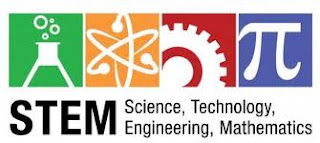http://tlc.howstuffworks.com/family/science-projects-for-kids-spectrum-of-colors.htm

Make a Kaleidoscope with your kids that reflects the spectrum of colors.
©2007 Publications International, Ltd.
Science projects for kids: spectrum of colors are interactive learning experiences that leave a lasting impression. Teach kids valuable lessons about color, light, and science with projects about the spectrum of colors.
Bring out colors using light, chemicals, and natural objects. Use science projects to create a sense of wonder in kids, as well as a deeper understanding of the natural world.
On the following pages, you will learn science projects that teach kids important lessons about the spectrum of colors.
Teach kids how to create the full spectrum of colors with black and white paper. Read about Not Just Black and White, a science project for kids.
Which colors are most visible at a distance? Find out when you learn about Colors at a Distance, a science project for kids.
A Kaleidoscope uses mirrors to reflect the spectrum of colors and create complex images. Find out how to make a Kaleidoscope.
Teach kids a science project that reveals what colors leaves will turn in the fall. Learn about Discover Hidden Leaf Colors, a science project for kids.
Find out how to use antacid tablets to create vibrant colors in this science project for kids. Read about Racing Color Changes.
This dramatic science project for kids uses chemicals to create vibrant color shifts. Learn about Erupting Weird Color Flow.
Not Just Black and White is a science project that teaches kids how to create vibrant colors using only black and white. Learn this science project on the next page of science projects for kids: spectrum of colors.
Color Separation (Chromatography)
Please do not copy, sell, post, publish, or distribute all or any part of this material without the author's permission. Instead, feel free to link to this website, and to contact me with questions.
You know candy is colored with artificial dye. But did you know that many candies contain several kinds of dye? To see the different dyes for yourself, try this.
 M&M chromatography. Brown has separated into the most colors (right).
M&M chromatography. Brown has separated into the most colors (right).
What you need:
- A rectangle of coffee filter paper
- Dyed candy such as M&Ms, Skittles, or Reese's Pieces
- A glass filled with a half-inch of water
- A pencil
What to do:
- Place drops of water on a flat surface, such as a plate, a cookie sheet, or tinfoil.
- Place candy on water and let color dissolve.
- Crease the coffee filter paper vertically (to help it stand up).
- Dab or paint a drop of candy-colored water onto the paper, an inch from the bottom. If you're testing several colors, label each with pencil.
- Stand the paper up in the glass of water, with the water level below the color splotch. (If the paper doesn't stand, check here for tips on folding or clipping the paper in place.)
- Watch the water seep up to the top edge of the paper.
What's happening:
When water seeps up the filter paper, it separates the different colors so you can see them. M&M brown works especially well--the different dyes separate out into a rainbow.
You can try this experiment with anything that contains dye, including juice, markers, or ballpoint pen (that’s why it’s better to mark your labels with pencil). Explanation based on author's interview with Walter Bowyer, chemistry professor at Hobart and William Smith Colleges
 Guide to Light and Color
Guide to Light and Color
Do you have a favorite color? Most people do, however for many people, it changes from time to time. Look around you. What colors do you see? What makes it possible for our eyes to see light and enjoy different colors? It's a sure thing that color adds beauty to anything it touches in our world. Scientists have done studies that show certain colors will stimulate the brain in different ways. It's funny to think that different colors are calming while others are energizing. Color and light are necessary elements in our world and make huge visual differences in our lives.
When trying to understand light and color, we must first understand that light travels in the form of a wave. These waves consist of both high and low points. The amount of distance between these points is called a wavelength. Short wave lengths will have a high amount of energy. Long wave lengths will have a low amount of energy. A good example of colorful wavelengths is the rainbow. The sun gives off its radiation which our eyes construe as the colors we see. There are seven colors in the rainbow and include red, orange, yellow, green, blue, indigo and violet. This is known as the visible spectrum.
|

